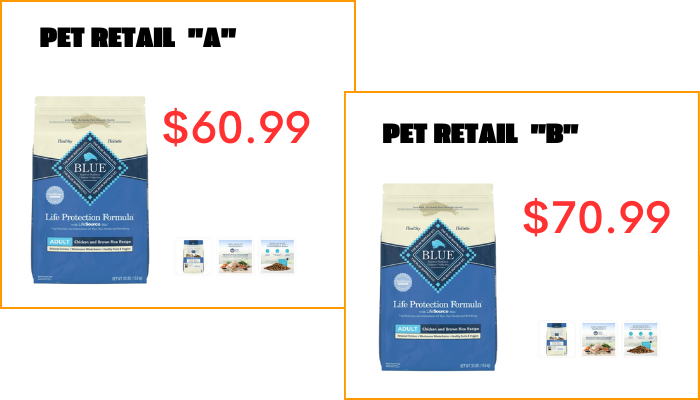How Pet Retailers Advance Growth with Competitive Intelligence
Pet spend remains consistent even with today’s economic headwinds.
🐾 The global pet industry is predicted to grow to $500 billion by 2030 (from $320 billion today).
🐾 Pet parents spent 66% more in February 2023 vs. January 2022.
🐾 41% of dog owners spend between $500 and $1,999 a year on their dogs. 8% spend more than $2K.
🐾 Buying pet supplies online is a preferred shopping method for 77% of millennials.
Americans are spending more money on their pets than ever before. For pet retailers, it’s become increasingly competitive to win the shopper’s dollar. Each retailer competes on value, convenience, and experience to build loyalty and grab the sale.
Pet retailers are expanding their channel offerings plus new retailers are entering the market – including pureplay e-commerce. As consumers opt for a hybrid shopping method, retailers like you need a complete data coverage to compete.
Continue reading to learn about building a competitive intelligence program and how to use the pricing and assortment data to beat your competition.
Key Elements for a Competitive Strategy
Pet retailers turn to competitive intelligence programs to collect and analyze data across the market. Competitive intelligence helps pet retailers define their competition, determine their key value items, monitor promotions, optimize pricing, and identify assortment gaps.
Retail competitive intelligence is the difference between being proactive and strategic or reactive (with inaccurate data).
Full Coverage Omnichannel Data Collection:
Your competitive intelligence program should include reliable in store data collection, uninterrupted web data collection, and flyer data. Plus, you should be able to harmonize this data with your internal enterprise systems and syndicated data sources for a truly useful data set.
ML-Driven Product Matching:
Your competitive intelligence program should help you overcome any product matching challenges. The best product matching functionality is able to use machine learning to match against images and text. You should have no problem matching against private labels or fresh products either. Learn more »
Recommended Actions, Dashboards, Data Feeds:
Your competitive intelligence program should provide actionable insights. Analytics should be normalized and scaled. And your data provider should offer descriptive, diagnostic, prescriptive, and predictive analytics.
The power of these three elements can’t be underestimated if you’re building a competitive strategy.
Can you imagine: Accurate product reconciliation at a geographic level so that you can drive growth across all of your channels.
Bungee Tech is able to take web data, in store data, and flyer data so that you have a comprehensive view of what’s happening in the market.
Competitive Pricing on Pet Products
A huge advantage to competitive data and analytics is the ability to compare prices across competitors and channels at a glance.
Let’s say you find out that a 30-lb bag of dog food retails for 16% more at your biggest competitor. Knowing this information gives you the ability to quickly adjust and learn. Or, what if a competitor is selling a key value item for less than you are… you have a complete view of the data to make the best decisions for your business.
Better Selection & Assortment Across Channels
With pet retail data, you can tell which products are unique to your catalog or overlap products to see assortment gaps.
Your matching process should have no problems categorizing items from national brands, private labels, or perishable/fresh categories.
Using reliable data, you’ll be able to track product and category performance. Monitor the competitions promotions and availability set to see where growth or declines are happening. Using the data to your advantage, you can optimize prices, create efficient promotional events, prioritize new products, and increase a shoppers basket size.
Data For Pet Retailers
So how do pet retailers really use competitive intelligence?
+ Understand the factors that go into a customers purchase decision
+ Analyze and optimize your pricing strategy
+ Monitor promotional events
+ Identify new market opportunities
+ Prioritize and quantify new products
+ Drive G R O W T H
Next Steps for Pet Retail Success
Data holes, errors, and inaccuracies make it hard to scale a competitive intelligence program. We’re here to help you automate your competitive intelligence program with accurate and comprehensive insights. Let’s chat if you’re interested in setting up a proof of concept. Reach out here »





